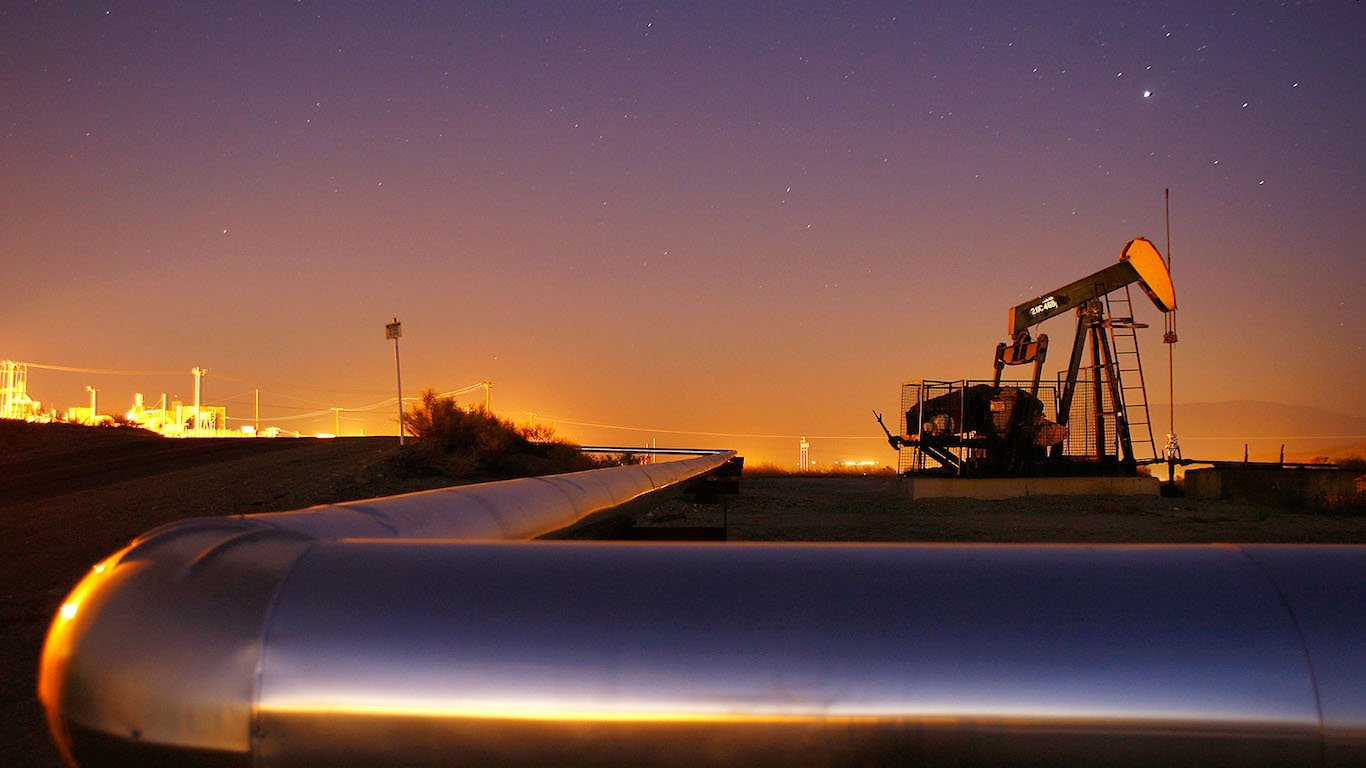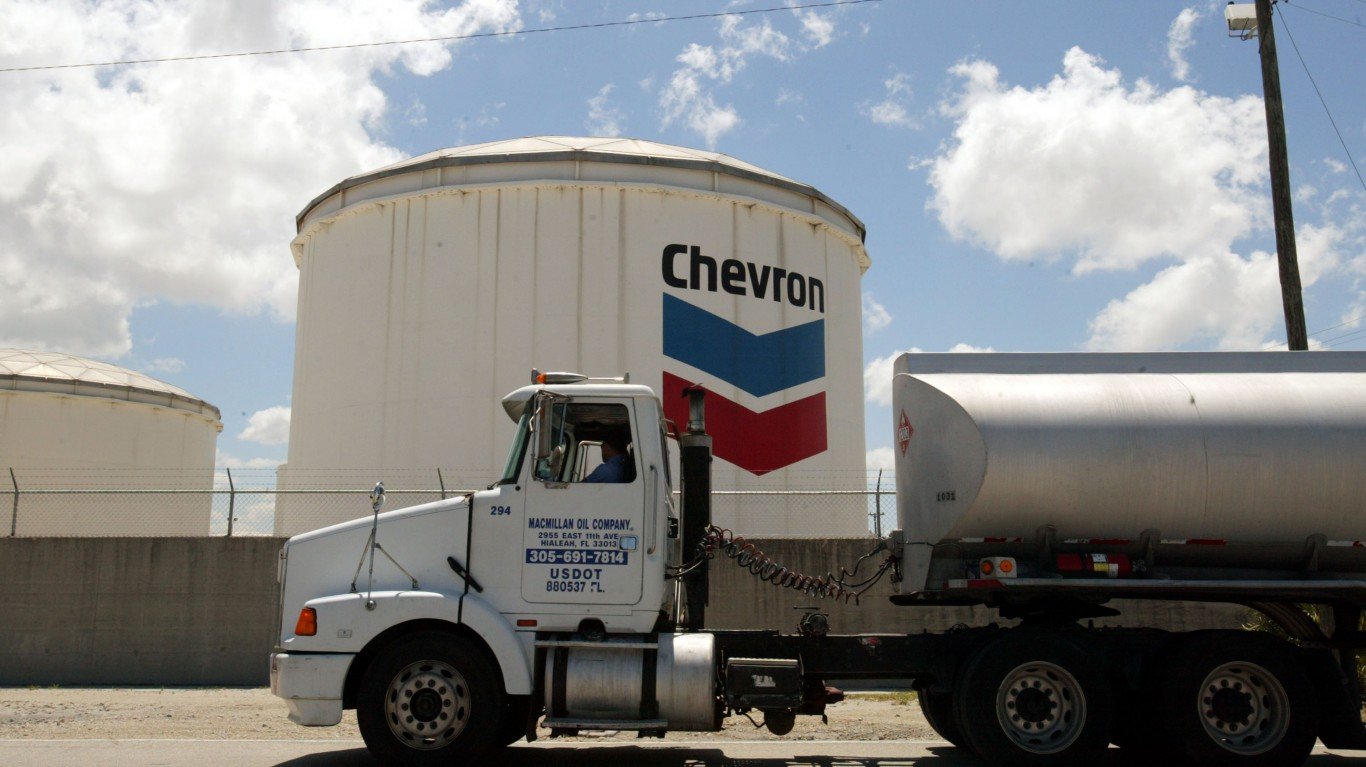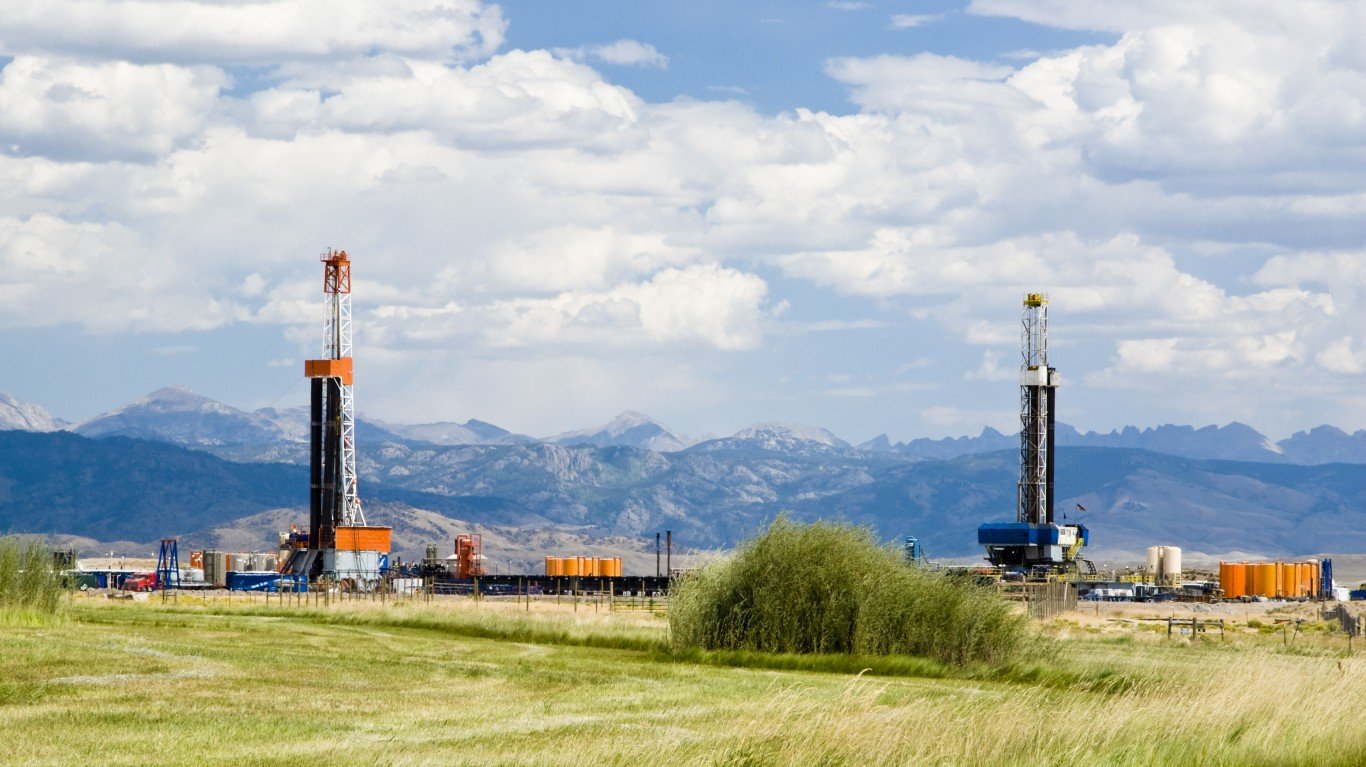

The world’s second- and third-largest integrated oil companies both got their start in the last half of the 19th century. Chevron Corp. (NYSE: CVX) traces its California beginnings back to 1865. Shell plc (NYSE: SHEL) traces its to a London antique store that expanded into an importer and seller of seashells in 1833.
How Shell and Chevron Look Now

In terms of market cap, Chevron’s current value of about $272 billion is more than 20% higher than Shell’s market cap of around $210 billion. The following table gives some basic numbers for both companies at the end of fiscal 2022.
| Shell | Chevron | |
|---|---|---|
| Revenue (billions $) | 381.31 | 235.72 |
| Net Income (billions $) | 42.31 | 35.47 |
| Long-term debt (billions $) | 51.53 | 20.97 |
| Production (thousand barrels of oil a day) | 2,864 | 2,999 |
| Proved reserves (million barrels) | 9,578 | 11,229 |
| Refining capacity (thousand barrels oil a day) | 1.402 | 1.779 |
| Refineries | 8 | 8 |
| Products sold (thousand barrels of oil a day) | 2,503 | 2,614 |
One note on the table: Shell reports its LNG business separately in its Integrated Gas segment. Chevron includes LNG in its Upstream segment. Shell reported LNG liquefaction volume of 30 million metric tons in 2023 and sales volumes of 66 metric tons. That works out to annual production equal to 336 million barrels of oil.
Chevron increased its proved reserves total by 10% with its $6.3 billion acquisition of PDC Energy in May. The announced $59.5 billion acquisition of Hess Corp. (NYSE: HES) could add a similar amount, bringing Chevron’s proved reserves to as much as 13 to 14 billion barrels.
Shell acquired EV charging firm Volta in January for $169 million and shed other renewable assets over the course of the year.
Shell’s history, condensed

Two companies, one Dutch and one English, showed up in South Asia in the mid-19th century. Royal Dutch Petroleum produced oil and refined it into kerosene in the East Indies. Shell Transport and Trading stored and moved oil and kerosene around the world. The two joined forces in 1907, forming the Royal Dutch Shell Group. Shell had earlier beaten back attempts by John D. Rockefeller’s Standard Oil to buy the company. For more details, see Daniel Yergin’s “The Prize: The Epic Quest for Oil, Money & Power.”
Over the next three decades, Royal Dutch Shell acquired oil concessions in Indonesia, Venezuela, Mexico, Columbia, Nigeria, Iraq, Saudi Arabia, and the United States. The concessions were rolled up into national oil companies in most of those countries by the 1950s.
By 1940, Royal Dutch Shell had also developed a global transportation system network and begun its marketing network of Shell gas stations. During World War II, Shell contributed both oil production and transportation to the Allied war effort. There have also been allegations of collaboration with Nazi Germany.
After the war, Shell drilled the first economically viable well in the Gulf of Mexico, followed a decade later by the start of commercial production in Nigeria. For more details, see the company’s own history.
In 2005, Royal Dutch Shell Group was dissolved and unified as Royal Dutch Shell plc. The company changed its name to Shell plc in January 2022.
A brief history of Chevron

Unlike Shell, the precursor of Chevron began life as part of Rockefeller’s empire. In 1900, Standard Oil bought Pacific Coast Oil, a San Francisco-based company founded in 1879. By 1901, Standard had built its first refinery in Richmond and completed a pipeline from the oil fields of southern California.
In 1911, threatened by antitrust litigation and the harsh words of President Theodore Roosevelt, Standard Oil split itself into pieces. The largest piece, Standard Oil of New Jersey, eventually became Exxon Mobil. Standard Oil of California eventually became Chevron.
The company adopted a new name, Socal, in 1926 and negotiated a 60-year concession deal with Saudi Arabia in 1932. In 1936, Socal formed a joint venture–Caltex–with Texaco’s large marketing network in Asia and Africa. Perhaps the biggest thing to happen for Socal in the 1930s was the adoption of the “Chevron” name for some of its retail products. Socal also became a leading supplier of aviation fuel during World War II’s Pacific campaigns.
After the war, Socal developed Sumatra’s billion-barrel Minas oil field and merged with the Kentucky offshoot of Standard Oil. The Caltex joint venture was dissolved.
Socal acquired Gulf Oil in 1984 for $13.3 billion, the largest corporate merger in history at that time. The merger resulted in a doubling of the company’s proved reserves and a new name, Chevron Corp. In late 2001, Chevron completed its $37.6 billion merger with Texaco.
Since then, Chevron has expanded its presence in Kazakhstan’s Tengiz field and other offshore fields in Nigeria, the Gulf of Mexico, and Australia. The company’s Gorgon and Wheatstone LNG projects in Australia combine to produce 5% to 7% of the world’s LNG supply.
Market projections

Global crude oil demand in 2013 stood at 92.1 million barrels per day (mb/d), according to U.S. Energy Information Administration data. Total demand at the end of this year will reach 100.99 mb/d, according to the EIA. The International Energy Agency forecasts global demand of 101.7 mb/d in 2023, up 2.3 mb/d compared to 2022. Demand growth will slow by 50% in 2024, meaning annual demand will rise to 102.8 mb/d.
Global supply growth in 2023 reaches 1.8 mb/d, according to the IEA, bringing total output up to 101.9 mb/d. Higher production in the United States, rising production from offshore Guyana and Brazil, and increased output from Iran are driving the growth. Non-OPEC+ countries account for two-thirds of 2023’s global supply growth.
In its latest Short-term Energy Outlook, the EIA forecasts U.S. crude oil production will be 12.93 mb/d at the end of 2023. The current forecast for 2024 calls for a rise to 13.11 mb/d. U.S. liquid fuels consumption for 2023 will be around 20.14 mb/d, rising to 20.39 mb/d next year.
The average price for a barrel of West Texas Intermediate crude oil will be $77.63 in 2023, down from $94.91 in 2022. The average price rises to $78.07 mb/d in 2024. Natural gas prices fell from $6.42 per million BTUs in 2022 to $2.56 this year. The current forecast for 2024 calls for a price of $2.79.
Capital investment

In early December, Chevron released its planned capital spending budget for 2024. The company plans to invest $14 billion in upstream projects, two-thirds of which is targeted for the United States. Chevron estimates that downstream (refining and marketing) capex will reach $1.5 billion, 80% of which is U.S. spending.
The company said that the total $15.5 billion includes approximately $2 billion aimed at reducing “the carbon intensity of traditional operations and grow[ing] new energy business lines.”
After completing its PDC Energy acquisition in October, Chevron said its capex budget would run between $14 and $16 billion through 2027. The announced, but not completed, acquisition of Hess raises that projected spending to a range of $19 to $22 billion.
When Shell reported third-quarter results in early November, the company said it expects its capex budget for 2023 to end in a range of $23 to $25 billion. The low end of the range drops to $22 billion for 2024 and 2025 while the high end remains unchanged.
Shell noted that between 2023 and 2025 it is investing approximately $35 billion into downstream and renewable energy projects. Of that total, $10 to $15 billion is going “directly into low-carbon energy solutions.”
Essential Tips for Investing: Sponsored
A financial advisor can help you understand the advantages and disadvantages of investment properties. Finding a qualified financial advisor doesn’t have to be hard. SmartAsset’s free tool matches you with up to three financial advisors who serve your area, and you can interview your advisor matches at no cost to decide which one is right for you. If you’re ready to find an advisor who can help you achieve your financial goals, get started now.
Investing in real estate can diversify your portfolio. But expanding your horizons may add additional costs. If you’re an investor looking to minimize expenses, consider checking out online brokerages. They often offer low investment fees, helping you maximize your profit.
Thank you for reading! Have some feedback for us?
Contact the 24/7 Wall St. editorial team.



